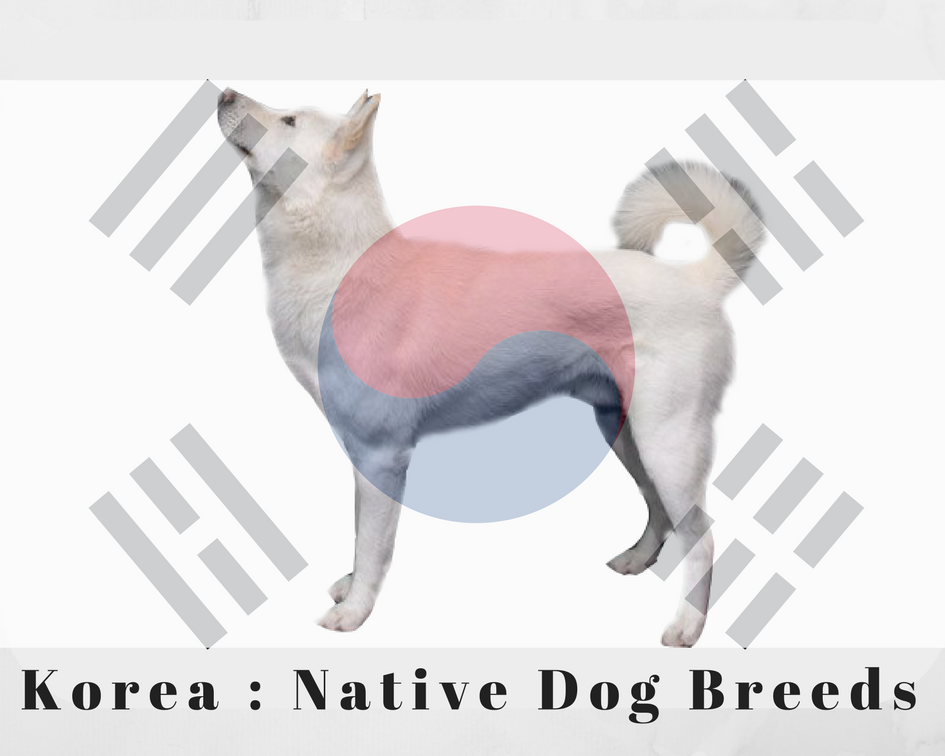1. DONGGYEONG
Donggyeong dogs have very short or no tails, which coincide with old records such as Donggyeong Jabgi 《동경잡기(東京雜記)》, Jeungbomunhyunbigo 《증보문헌비고(增補文獻備考)》, as well as excavated clay dolls of the sixth century Silla’s capital, Donggyeong. Its face is similar to another natural heritage dog, the Korean Jindo.
Donggyeong dogs were easily seen around Gyeongju and were considered to be worth preserving for its national characteristics; however, the dogs were slaughtered during the Japanese colonial era (1910-1945) due to their alleged similarity to ‘Komainu’, the figures seen in Japanese royal families or shrines. Jindo breeds, Sapsali dogs and Donggyeong were endangered as they were slaughtered for their skins to be mass-produced for making coats.
After the Liberation of 1945, Donggyeong dogs were despised: their lack of tails was thought to bring bad luck or were thought to be deformed. Therefore, the number of Donggyeong dogs was drastically decreased. Hybridization with other breeds worsened the situation until breed preservation and designation efforts started.
2. JEJU DOG
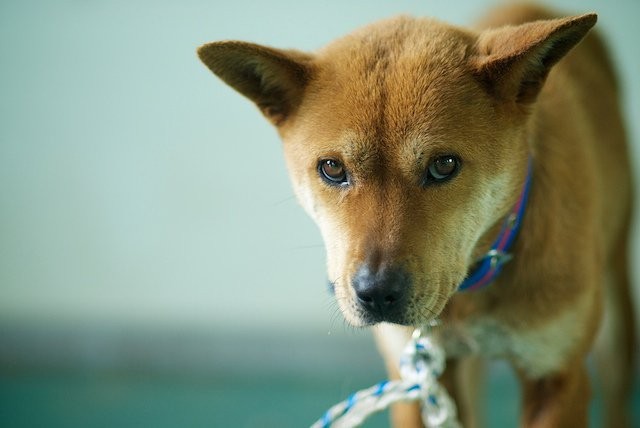
The Jeju Dog, which is also called Cheju Dog, Chaeju, and JejuGae, is a breed of dog that was brought back from the edge of extinction in 1986 when only three of them were found on the entire island of Jeju in South Korea. Since then, an aggressive campaign of breeding has yielded a current population of close to 300. However, the ‘purebred’ Jeju Dog population is only estimated to be at about 69 as of September 2010.
In 2010, Korea designated the Jeju Dog as a national heritage animal, which will allow for subsequent national protection. Before this, not enough animals remained to allow for such a distinction.
Protection initiatives include a 2017 auction held by the Jeju Livestock Institute for those interested in adopting one of the 20 puppies. According to the institute, the goal was to continue to breed and preserve the Jeju Dog after being criticized for selling the puppies.
Jeju dogs may have originated in China, moved south along the peninsula, and came to Jeju Island some 3,000 years ago. Who brought the animals to the island and what their original purpose was being unclear. Moreover, when Jeju Dogs were brought to South Korea, they became military dogs, and when no longer military, people often ate them, which is the primary cause of the breed being endangered. Some sources cite how the Japanese during the Korean colonization ordered the slaughter of dogs indigenous to Korea and contributed to the near-extinction of the breed.
After multiple tests of Jeju Dog genes and descent analysis, animal husbandry in Korea is (2010) planning to request them to be nominated as the Korean National Monument.
3. KOREAN JINDO
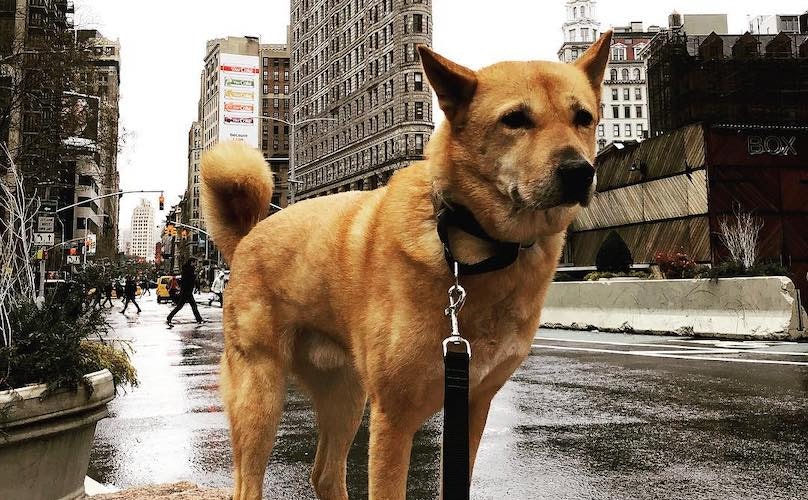
The Korean Jindo (진돗개) is a breed of hunting dog that originated on Jindo Island in South Korea. Brought to the United States with South Korean immigrants, it is celebrated in its native land for its fierce loyalty and brave nature.
There is no written record of the origin of the Korean Jindo Dog. Authorities agree that the Jindos existed on Jindo Island for a long time. One theory proposes the Jindo as cross-breeds with Mongolian dogs when Mongol forces invaded Korea around the 13th century.
They are now protected under the Cultural Properties Protection Act.
In 1962, the Government of South Korea designated the Jindo as the 53rd ‘Natural Treasure’ (or translated as ‘Natural Monument’) (천연기념물; 天然記念物) and passed the Jindo Preservation Ordinance. Because of the special status of the Jindo, it is very difficult to export purebred Jindo outside of Korea. Jindos marched in the opening ceremonies of the 1988 Summer Olympic Games in Seoul, Korea. The United Kennel Club recognized the Jindo on January 1, 1998.
The Jindo Dogs Guild of Korea (Korean: 한국 진돗개 조합), as of 2008, issues certificates of pure Korean Jindo Dog, which specifies the registered number of the mother, sex, and birth date of the dog, as well as breeder’s address and whether the dog is of purebred.
The breed first appeared in the West in France and has since made its way over to the U.S. There are only two Jindos registered in the U.S., one in the Los Angeles area and one in Seattle. There are 25 registered in the United Kingdom. Also, the Korean government and Samsung have contributed to efforts to gain international recognition for the Jindo. Read More…
4. NUREONGI
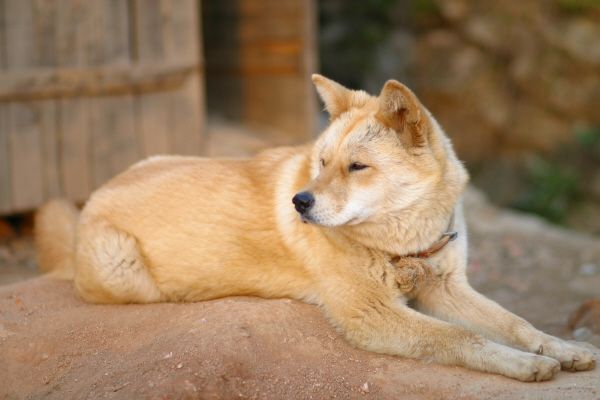
The Nureongi are mongrel dogs with yellowish colouring often used as a source for dog meat in Korea. The term is the transliteration of the Korean word “누렁이” meaning “yellow one”.
In a 2009 review article about dog meat consumption in South Korea, Anthony Podberscek of Cambridge University cited an earlier paper’s finding that, although other kinds of dogs are also farmed and eaten, the Nureongi-type dogs were the most commonly used.
5. PUNGSAN DOG
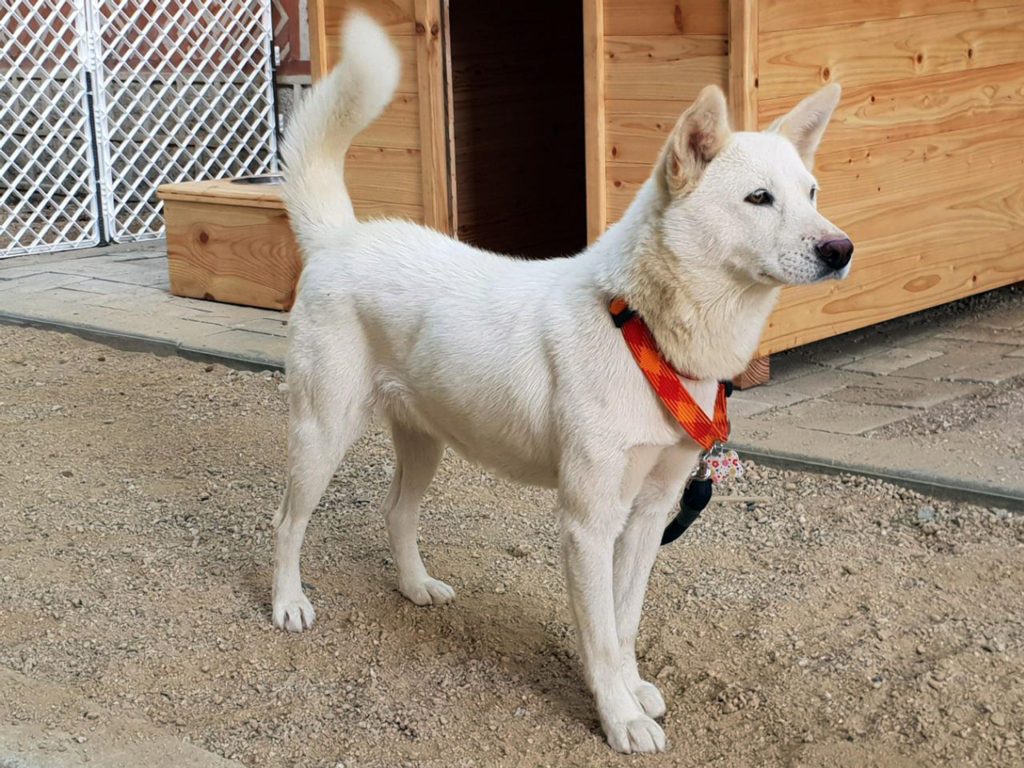
The Pungsan or Poongsan is a breed of hunting dog from Korea. They were bred in the Kaema highlands of what is now North Korea. The dogs were traditionally hunting dogs.
The dog is a rare breed and is sometimes smuggled over the North Korea–China border.
The dog was made a national monument of North Korea in April 1956.
During the 2000 inter-Korean summit, North Korean leader Kim Jong-il made a gift of two Pungsan dogs (associated with the North) to South Korean President Kim Dae-jung. In return, Kim Dae-jung gave two Jindo dogs (associated with the South) to Kim Jong-il. Born at the Pyongyang Central Zoo, the Pungsan dogs were originally named Dangyol (Unity) and Jaju (Independence), but were later renamed Uri (meaning We) and Duri (Two). They initially lived in the Blue House, the residence of the South Korean president, before being moved to the Seoul Zoo, where they gave birth to 15 puppies before both dying at age 13. During their lives, the dogs were accorded special status as guests of the state.
At their Pyongyang summit in 2018, North Korean leader Kim Jong-un gave two Pungsan dogs to South Korean President Moon Jae-in. The male was named Songkang, and the female was named Gomi. Gomi gave birth to six puppies within two months afterwards, leading Moon to remark that she must have been pregnant when she was given to him. He later published photos of them at the Blue House on November 25, 2018, and labeled them as “peace gift” puppies.
6. SAPSALI
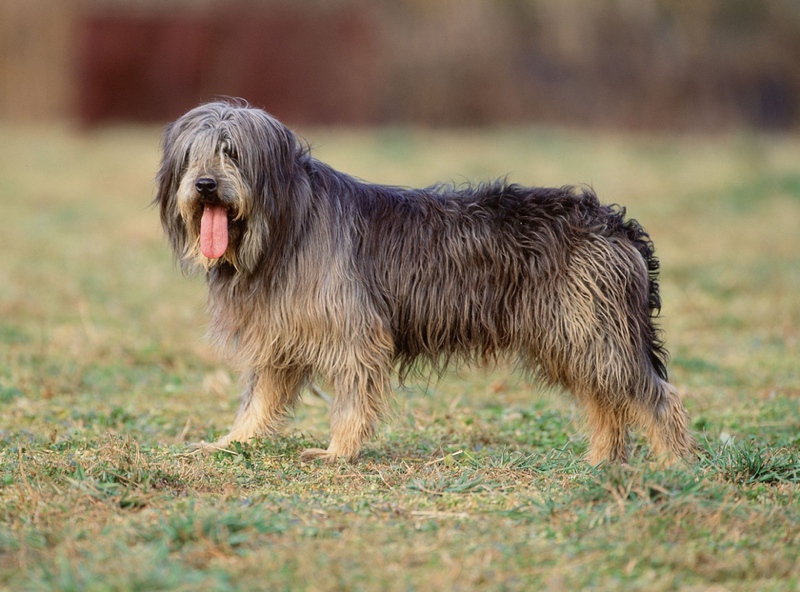
The Sapsali (삽살이) is a shaggy South Korean breed of dog. The word is followed in Korean by either gae (meaning “dog”) or the suffix ee / i, but is also romanized as “Sapsaree”. Traditionally, these dogs were believed to dispel ghosts and evil spirits.
The Sapsali, just like the Jindo, was designated as a National Treasure (No.368) in 1992 by the South Korean government. The Sapsali has been identified and recognized by both leading Korean dog societies, the Korean Canine Club (FCI affiliate) and the Korean Kennel Club.
The breed was very popular among aristocrats of Silla and may have been used as military dogs. After the collapse of Unified Silla, the Sapsali became popular throughout the Korean Peninsula, appearing in classic Joseon-era literary works such as “Chunhyangjeon” and “Yeolha Ilgi”. They were slaughtered in large numbers by the Japanese when Korea was under Japanese rule to make winter coats for its military in Manchuria. Near extinction in the mid-1980s, the breed was revived using the eight remaining dogs.
